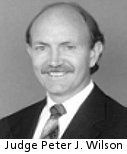Article from: www.thenewspaper.com/news/32/3240.asp
8/24/2010
More California Courts Refuse Red Light Camera Evidence
Another consolidated ruling in Orange County, California finds red light camera evidence inadmissible hearsay.
 The public relations group founded by red light camera firms, the National Campaign to Stop Red Light Running, issued a warning in July 2009 that the industry was threatened by the US Supreme Court's newly developed understanding of the Confrontation Clause of the Constitution. The prediction proved accurate in the California courts. Last week, a San Diego County court threw out eight red light camera tickets in a consolidated case (view ruling). On Thursday, an Orange County judge followed suit, dismissing seven tickets in a consolidated case.
The public relations group founded by red light camera firms, the National Campaign to Stop Red Light Running, issued a warning in July 2009 that the industry was threatened by the US Supreme Court's newly developed understanding of the Confrontation Clause of the Constitution. The prediction proved accurate in the California courts. Last week, a San Diego County court threw out eight red light camera tickets in a consolidated case (view ruling). On Thursday, an Orange County judge followed suit, dismissing seven tickets in a consolidated case.
Orange County Superior Court Judge Peter J. Wilson considered the red light camera evidence presented to him by a local police officer to be insufficient in light of the high court's directive in Melendez-Diaz v. Massachusetts (view ruling).
"The prosecution's sole witness, Officer Bell, provides no direct testimony whatsoever about the particular defendant or the particular infraction," Judge Wilson wrote. "Here there is no evidence about the authenticity of the actual photographs... Instead, there is only a description by the officer of the circumstances under which these types of photographs can be taken at the intersections in question. At best, the officer's testimony establishes in general how the photo enforcement system at the intersection is supposed to work..."
To determine the accuracy of the photographs, Officer Bell relied entirely on a declaration from Redflex Traffic Systems, the private Australian company in charge of the photo ticketing program. Bell lacked personal knowledge of three critical facts necessary to lay a proper foundation for the evidence.
"The declaration contains testimonial hearsay without which the officer cannot identify the photographs as photographs actually taken by the Redflex system, cannot identify the photographs as pertaining to any particular infraction, and cannot provide any testimony concerning the actual (proper) operation of the photo enforcement equipment at the locations in question at the dates and times in question," Wilson wrote.
County prosecutors attempted to argue that it was sufficient that Bell was trained in April 2009 on the camera system's workings so that he was able to explain the general process used to create the photographic evidence. Following the reasoning in the Khaled decision (view ruling), Wilson emphasized that Bell needed specifically to know the photographs used to accuse the defendants, not just any photographs. Wilson described the prosecution's reasoning as essentially circular.
"Here, the expert is testifying to the reliability of the evidence presented to support a finding that a violation occurred," Wilson wrote. "In order to do that, he must rely on hearsay and on computer data proffered without proper foundation, to opine that that same hearsay and data is reliable. He cannot bootstrap himself into supporting his own opinions in this way."
Without proper foundation, the photo evidence was ruled inadmissible and the seven cases dismissed. A copy of the decision is available in a 550k PDF file at the source link below.
Source: California v. Calhoon, et al. (Superior Court of California, Orange County, 8/19/2010)
Permanent Link for this item
Return to Front Page
 The public relations group founded by red light camera firms, the National Campaign to Stop Red Light Running, issued a warning in July 2009 that the industry was threatened by the US Supreme Court's newly developed understanding of the Confrontation Clause of the Constitution. The prediction proved accurate in the California courts. Last week, a San Diego County court threw out eight red light camera tickets in a consolidated case (view ruling). On Thursday, an Orange County judge followed suit, dismissing seven tickets in a consolidated case.
The public relations group founded by red light camera firms, the National Campaign to Stop Red Light Running, issued a warning in July 2009 that the industry was threatened by the US Supreme Court's newly developed understanding of the Confrontation Clause of the Constitution. The prediction proved accurate in the California courts. Last week, a San Diego County court threw out eight red light camera tickets in a consolidated case (view ruling). On Thursday, an Orange County judge followed suit, dismissing seven tickets in a consolidated case.